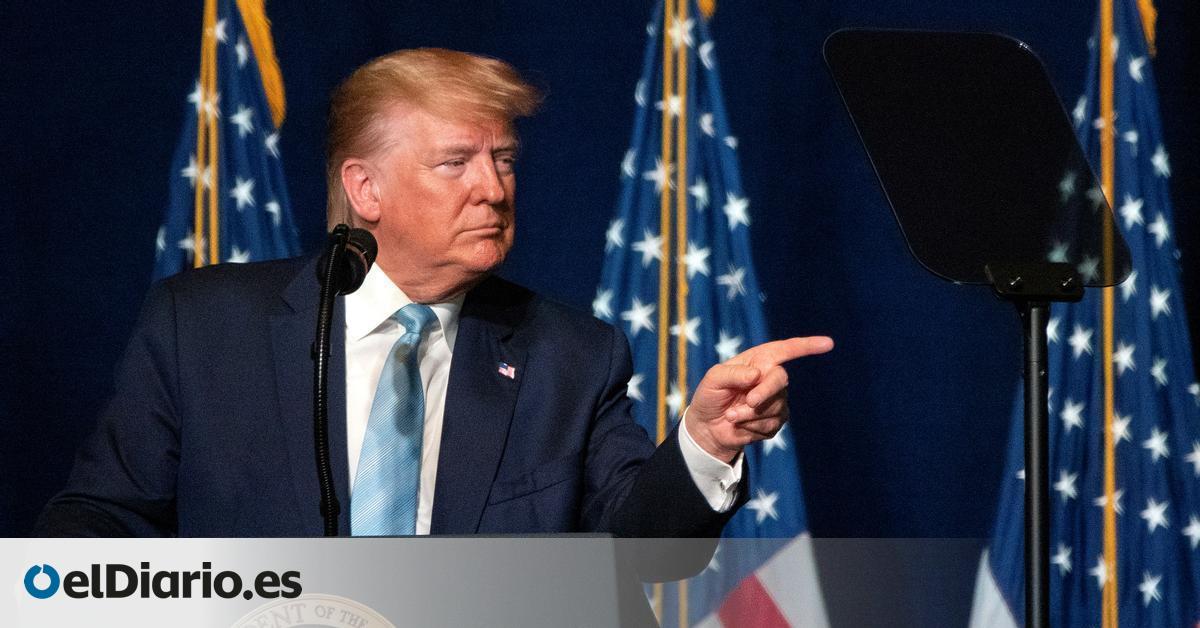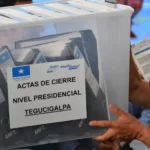
Donald Trump has promised to sign an executive order on the first day of his presidency imposing 25% tariffs on all products from Mexico and Canada, as well as 10% China. He announced it this Tuesday morning in two different publications on his Truth Social network where he alludes to immigration and drug trafficking as the reasons for doing so.
“On January 20, as one of my many first executive orders, I will sign all necessary documents to impose a 25% tariff on ALL products entering the United States and its ridiculously open borders on Mexico and Canada. This tariff will remain in effect until drugs, particularly fentanyl, and all illegal immigrants stop this invasion of our country. “Both Mexico and Canada have the absolute right and power to easily resolve this problem,” Trump wrote in a first post.
In a second publication, he assured that “we will impose an additional 10% tariff on China, in addition to any other additional tariff, on all products” that are exported to the United States until drug trafficking and especially fentanyl is solved. . Likewise, he regretted that the Chinese authorities have not fulfilled their promise to impose the death penalty on fentanyl traffickers.
Trump has recovered the old playbook he used during the first administration and has launched a threat against the country’s three main trading partners through posts on a social network. Before it was Twitter, now it seems it will be Truth Social.
The immediate effect that can be expected from the application of tariffs is an increase in prices, which would go against Trump’s promise to control inflation and lower the price of shopping carts. Not to mention the impact it can have on the American automobile industry itself. A good part of his voters elected him for his economic promises.
Throughout the campaign, the Republican had already made promises to apply protectionist policies, especially with China. In March, during a rally in Ohio, he promised that he would impose “a 100% tariff on all cars that arrive.” He made this statement accompanied by the comment that if he did not win the elections it would be “a bloodbath”, in theory in reference to the automobile industry. It has also promised to impose tariffs of 60% on Chinese imports, as well as another levy of between 10% and 20% on imports from other countries.
The idea of imposing a 100% tariff on cars imported from China has also been replicated with cars imported from Mexico. Trump announced the measure at a rally in September and assured that the only way to avoid these charges would be to take the factory to the United States. The proposal set off alarm bells in the American motorsport sector, since many manufacturers make their cars cheaper in Mexico or other countries to reduce costs.
The truth is that the manufacturing of American cars in Mexican territory, which Trump wants to put an end to, is possible thanks to a trade agreement negotiated by him during his previous presidency. Trump’s proposal for these new tariffs that he announces for Mexico and Canada would mean violating the treaty signed with the other two countries in 2020. The Republican favored this new agreement that replaced the NAFTA (North American Free Trade Agreement) of 1994 that the Republican criticized during his previous election campaign.
The treaty must be reviewed in 2026 and the president-elect’s team has already been considering possible changes to prevent China from using Mexico as a base from which to export its electric vehicles, steel and other goods to the United States. In May, current President Joe Biden already opened a new front with China by announcing an increase in import tariffs. Biden announced that private vehicles would go from having a tax of 25% to 100% and these increases would not come into effect until 2025 and 2026, as explained by the White House in the statement.
Although the Republican has been making on-air announcements about his protectionist policies, he has not yet presented a clear and articulated plan about what can be expected once he takes office. For now, the only indicators are their promises and announcements like the one this Tuesday morning.
Just as this is not the first time that Trump makes politics based on tweets, it is also not the first time that he uses his trade policy to try to solve other problems that are not related to the issue. In 2019, it already announced a series of increases in tariffs against Mexico in order to pressure the Mexican government to stop the arrival of Central American migrants to the United States. The Republican said he would impose a 5% tax on Mexican goods, which would increase another 5% each month until he considered the border problem resolved.
Source: www.eldiario.es

